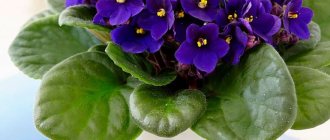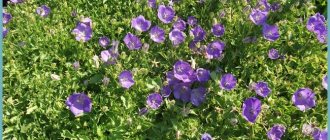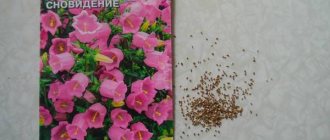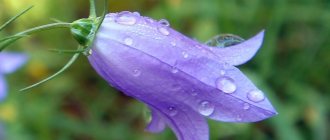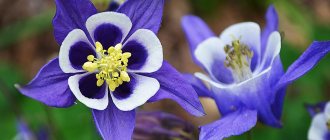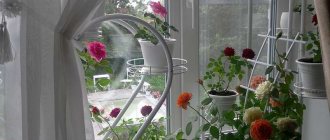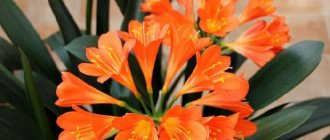On the edges of the forest, as well as in the fields, you can see a herbaceous bush called the bell. This flower is completely unpretentious. In nature, it grows in places with different climates. It can be found in the Caucasus, Siberia, and many other parts of our country. Today, human activity has led to the fact that this representative of the plant world is less common than before.
The plant belongs to the bellflower family. In the Pskov region it is also called a bell. In ancient times, it was a decoration for both the estates of nobles and the flower beds of ordinary people.
The colors of the flowers vary: some are blue, purple, while others are white or pink. Most often, flowering occurs in June - July, but sometimes lasts until the first frost. The shape and size of the leaves differ among different species of this family. Their flowers are collected in panicles or brushes. When it rains outside, or at night, the bush closes them and lowers its heads down. This way it is protected from moisture getting inside. Insects often wait out bad weather in flowers.
The Campanula family is the scientific name of the genus Campanula. Photo: flickr.com/marilyllesoveran
Most bellflower species are perennials. They grow in one place for a long time. When the plant fades, instead of a flower, a fruit in the form of a box is formed. After a certain time, it cracks and the seeds spill out onto the ground.
The plant got its name because of the shape of the bud. Its petals grew together and formed something similar to a bowl or bell. Also, according to legend, once a year, on the night before the celebration of Ivan Kupala, the melody of these lovely flowers sounds over the meadows.
A story about a bell - a beautiful meadow flower
On the edges of the forest, as well as in the fields, you can see a herbaceous bush called the bell.
This flower is completely unpretentious. In nature, it grows in places with different climates. It can be found in the Caucasus, Siberia, and many other parts of our country. Today, human activity has led to the fact that this representative of the plant world is less common than before. The plant belongs to the bellflower family. In the Pskov region it is also called a bell. In ancient times, it was a decoration for both the estates of nobles and the flower beds of ordinary people.
The colors of the flowers vary: some are blue, purple, while others are white or pink. Most often, flowering occurs in June - July, but sometimes lasts until the first frost. The shape and size of the leaves differ among different species of this family. Their flowers are collected in panicles or brushes. When it rains outside, or at night, the bush closes them and lowers its heads down. This way it is protected from moisture getting inside. Insects often wait out bad weather in flowers.
The Campanula family is the scientific name of the genus Campanula. Photo: flickr.com/marilyllesoveran
Most bellflower species are perennials. They grow in one place for a long time. When the plant fades, instead of a flower, a fruit in the form of a box is formed. After a certain time, it cracks and the seeds spill out onto the ground.
The plant got its name because of the shape of the bud. Its petals grew together and formed something similar to a bowl or bell. Also, according to legend, once a year, on the night before the celebration of Ivan Kupala, the melody of these lovely flowers sounds over the meadows.
What pests and diseases are dangerous for the bell
The bell, by its nature, is an unpretentious flower, however, it has too low a level of immunity against various types of diseases, as well as the effects of insects, which sometimes leads to very harmful consequences.
And in cases where perennials are grown for long periods without replanting, a large number of harmful microorganisms can accumulate in the soil. In order to avoid negative consequences, plants should be treated with a special solution of Fundazol. The procedure is repeated twice a year.
A disease such as slobbering frog usually infects bushes in wet weather. In order to cure a flower, it must be treated with garlic infusion. But for low-growing classes of flowers, slugs pose a serious danger.
If such incidents occur, it is necessary to prepare a decoction of hot pepper and treat the flowers with it. And also treat the soil with granular superphosphate.
Features and types of flower
The plant has a wide variety of species. There are about 150 of them in the world, and in Russia 15 of them grow. Today, many cultivated varieties have been bred. All of them became decorations of gardens and parks.
According to external features, all types of bells are divided into two groups:
Flowers may vary in both color and size.
Representatives of different species may differ noticeably from each other, but all have a flower in the shape of a small bell.
Message about the Bluebell plant
Campanula belongs to herbaceous plants from the Campanula family. It got its name because of the shape of the flower. The bell grows on forest edges and sunny glades, in the steppe and in alpine meadows. There are more than 300 species of this plant in the world, in Russia - at least 150. Bells differ in size and different shades of colors. They can be from pale blue to lilac and dark blue. White bells are sometimes found. The stem of a plant can be simple or branched, creeping or creeping, it depends on its type. Bells begin to bloom at the end of May and until mid-August. Some plant species can continue to bloom in September. The ripe fruit of the plant is a box with seeds that remain viable for more than 4 years.
The most common types are crowded, nettle-leaved, peach-leaved and onion-leaved bells. Due to their beauty, many gardeners began to plant them in their garden plots. The crowded bell is distinguished by flowers closely pressed to each other. On one stem you can count up to 20 corollas. The nettle-leaved bell is similar in its leaves to nettles. Its flowers are deep blue with a purple tint. The peach-leaf bell is less than a meter in size, and its leaves are similar to those of a peach. Grows in fields and near paths. This plant is considered the most beautiful of the entire family, its flowers are sky-blue, so they were the first to be planted in gardens and garden plots in Europe. Onion-leaved bells are also distinguished by their beauty; the bright blue flowers are located seven to eight floors below each other.
How is a bell useful?
The very first calling of this flower is to decorate parks and alleys. But it is also used in medicine. To treat diseases, all parts of the medicinal bush are taken - flowers, roots, leaves, seeds and stems. They make decoctions, powders, and tinctures. The most suitable time for collecting plants is the flowering period.
Bell decoction has the property of killing microbes. Therefore, it is used to treat cough, sore throat, headache, fever and other diseases. Poultices are used after dog bites to speed up wound healing. The plant also gives strength to weakened children. To do this, mothers add a decoction of it to the bath when bathing the baby.
Gardeners often plant bellflower to decorate the site.
In this report, we met a wonderful inhabitant of fields and forests, mountains and slopes - the bell.
Source
A story about a bell for children
In the fields and forests of our vast country there is a plant that is notable both for the shape of the flower and for its name.
This beautiful plant, the flower of which is painted in all shades of blue, is called “bell.” And this plant deserves its name - its flower is shaped like a real small bell. Campanula belongs to the genus of herbaceous plants of the Campanaceae family. Bells grow mainly in meadows, but they also like to settle in forest clearings, and some types of bells have even colonized mountain slopes. Mountain types of bells are short in stature, but at the same time they have large and beautiful flowers. Still would! After all, on the slopes the sun is more generous.
The bluebell is famous for its variety of species. There are more than a hundred different types of bells in our country. For example, in spacious meadows the most common species is the spreading bellflower. This plant has one peculiarity - it has a very weak, thin stem, so it grows well where other types of herbs are closely intertwined, which serve as a kind of support for the spreading bell. And it is called spreading because of its stem, on which many branches branch, covered with numerous flowers.
The bell-shaped flower of this plant is formed by the fact that its petals grow together and form a characteristic bell-shaped bowl. During the day, in good weather, the flower looks into the sky, and in case of rain or at nightfall, it will bend towards the ground. Since the fused petals cannot close at night, as happens with other flowers, this plant is loved by various insects, which climb into the “bell” to spend the night and warm up.
Beneficial properties of bell
The bell is not only a beautiful, but also a useful plant. An infusion of bells has antimicrobial and anti-inflammatory properties. It is used in the treatment of cough, migraine, and other diseases. And our ancestors used bell-based poultices for dog bites.
A little tale about a bell
...Once upon a time there was a bell. He stood alone by the road. He was sad. He had no friends. But then one day a cheerful little bee flew to him. She told her new friend her little forest secrets. The fidgety wind flew nearby and heard everything. But he didn't tell anyone anything. What for? He has his own life and his own interests. And the sun saw everything and smiled. It waved to the wind, its old friend, and continued its work of illuminating planet Earth...
This entry is password protected. Enter your password to view comments.
Source
Common varieties
Due to their decorative nature and ease of care, bells are often used to decorate local areas; flower beds and unusual rock gardens are created on their basis. In ancient times, this flower was considered magical, and the first description of the bell was made 3 thousand years ago. Songs and legends were written about him, and numerous mysterious stories are associated with him.
Today, biologists conduct research and describe new plant species in their communications and reports. Its most common varieties are:
- Spreading bellflower prefers meadows and light woodlands. It usually blooms in early July, the stem is 50-60 centimeters high. It is a biennial plant with oblong leaves and large turquoise and blue flowers.
- Peachleaf forest is one of the most beautiful varieties of bluebells with a flower of a cool, heavenly shade. The plant is found in fields, near paths and in copses. Initially, the peach-leaf bell grew only in Asia, but was later successfully cultivated in European countries.
- The nettle-leaved meadow flower prefers damp ravines and is distinguished by its tall size - its stems can reach a height of 140 cm. The leaves are similar in appearance to nettles, which gives the plant its name. Inflorescences with corollas and white-blue petals are grouped in brushes of three.
- The crowded one has a stem height of no more than 60 cm and small dark blue or purple flowers, collected in bunches. Flowering begins in June and continues until mid-August. This ornamental plant is often used by landscape designers to create small flower beds.
- The Carpathian broadleaf bell is a dwarf variety, has excellent decorative properties and can bloom for about 70 days. The plant looks like a small shrub with a diameter of up to 30 centimeters with abundantly strewn flowers of white, lilac and blue shades. The upper part is large in size, abundantly strewn with inflorescences. It seems that the flowers can ring in the wind.
Breeders annually receive new bellflower hybrids that have an unusual appearance, are distinguished by characteristics, decorativeness and ease of care.
The main significance of the species is their use in landscape design. This is an excellent plant for novice flower growers and owners of private houses who want to decorate their home area without burdening themselves with complex gardening work. Some species are extremely rare in the environment, so biologists were forced to list them in the Red Book.
Bell flowers. The world
Bluebells are beautiful forest flowers. The shape of the flower resembles a large church bell, and the flower got its name from the word “bell”, only because of its size it is affectionately called, diminutively, bell.
It seems that the breeze will blow and the bell flowers will ring gently.
Bell
A gentle chime is flowing,
So it rings in the wilderness of the forest
The round leaves of the bell are located at the bottom and are collected in a basal rosette. There are small leaves in the middle, and larger ones at the edges.
There are always a lot of bells in the meadows and clearings, because whole families grow of them.
Bluebells bloom in May. The flower bud looks like a folded umbrella and is initially located horizontally. But when the buds open, the bell flower descends on the peduncle and looks down. Large insects - bumblebees and bees - can fly into the flower from below. While they get to the nectar located in the very depths of the flower, particles of golden pollen remain on their abdomen, back and legs. Flying to other bells, insects pollinate them.
Bells bloom for a long time, from May to September. At the end of summer and autumn, the bell fruits ripen. These are small boxes that, like flowers, look down. The bell box is a bit like a pepper shaker with small holes closed by valves. The valves open in dry weather and close in damp weather, protecting the seeds from moisture. This happens because in rainy weather the valves swell and close the holes through which seeds can spill.
There are various types of bells. There are dark blue, purple, lilac, blue, pink and even white bells.
And on the Canary and Azores islands, giant bells bloom, their stems are taller than human height!
Listen to the tale about the forest bells.
Bells and gnomes
A long time ago, in a dense forest, under the roots of an old hollow pine tree, there was a deep dungeon.
There, in an underground palace, lived cheerful, kind gnomes. At night they went out into the forest clearing. The breeze swayed small purple bells growing in the thick grass; they, ringing gently, told the gnomes about everything that had happened in the forest that day.
One day the bells told the kind little people that a helpless, recently fledged chick had fallen out of the robin's nest.
“Now he is sitting in the grass under a hazel bush. His feet are chilly from the cold night dew. The poor thing is very scared alone in the dark forest,” the bells rang in alarm.
The good gnomes immediately went down into the dungeon and, seizing the stairs, went to the hazel tree, under which the chick was hiding.
Fireflies lit their way, and the gnomes quickly found the baby, warmed him in their warm palms, calmed him down and carried him to a tree, in the thick branches of which the house of robins was hidden.
The most dexterous and brave gnome made it up the stairs to the nest and returned the chick to its parents.
Their joy knew no bounds! The robins thanked the kind gnomes for a long time. And the little people modestly answered: “The bells helped you, they told about the misfortune that befell your baby and helped save him.”
Questions for consolidation
What does a bell look like?
Why do bell flowers “look down”?
What insects pollinate bluebell flowers?
What do bell fruits look like?
What did you like (remember) about the fairy tale “Bells and Dwarves”?
Author: Shorygina Tatyana Andreevna
We recommend watching:
Legends about flowers for children, grade 2
A story about cornflower, grades 1-2
Conversation on the topic “Flowers” in the senior group
Riddles about flowers for children 6-7 years old with answers
Tales about flowers for older preschoolers
No comments yet. Yours will be the first!
Types of bellflower
In total, there are more than 300 types of this plant. The favorite places of this plant are in temperate climates. This flower is often found in Central Asia and can be found in many European countries.
The mountain ranges of the Caucasus create good conditions for the growth of some varieties. And in North America you can admire this flower. Even the harsh climate of Siberia did not bypass this wonderful plant.
150 species of this plant bloom on the territory of the Russian Federation. The variety of species of these flowers includes the possibility of seeing them in different places and countries. They grow well in meadows and forests. There are also varieties of bluebells that prefer rocky areas.
Previously, we talked about this type of bells, the wide bell.
Nowadays, some varieties of bellflower are on the verge of extinction. Due to constant collections for business purposes, the twelve species of this wonderful flower found in Italy will soon disappear. In Karelia, the decorative peach bell is under state protection.
Bluebells are becoming increasingly rare in common habitats every year. In our time, they have begun to disappear en masse, and it’s all to blame for the destruction of these beautiful flowers for collections for bouquets. The disappearance of these beautiful flowers continues with increasing intensity due to the destruction of their usual places of growth.
Bluebell Carpathian
This is the most common inhabitant of garden rockeries and alpine slides. Very beautiful and fragile at first glance, it is distinguished by winter hardiness and the longest flowering period - 65-75 days.
Botanical description of the plant:
The plant propagates by seeds or by dividing the bush. In regions with mild winters it self-sows. Growing from Carpathian bellflower seeds is done through seedlings. Seeds are sown in February in boxes with fertile and breathable soil.
The seeds are very small, so they are scattered on a moistened surface and pressed down with the palm of your hand. Additionally, you can moisten the soil with a spray bottle.
Seeds are germinated in light under glass. Shoots appear after 2 weeks. After another 3 weeks, young sprouts dive into larger containers, followed by transplantation into open ground in May. Carpathian bellflower loves well-lit areas with drained soils. Does not tolerate stagnant water. In the garden they are planted with other ground cover at a distance of at least 20 cm, as it grows quickly.
Cultivated varieties include Carpathian bell Alba, White Star, Isabel, Centon Joy, which have white, purple and blue flower colors.
Bluebell Carpathian Alba
Bellflower peach
Distributed throughout the European part of Russia and other CIS countries. A recognizable inhabitant of wild meadows and forests. In nature, it most often has blue flowers and reproduces by self-sowing. Rarer varieties have white and purple inflorescences.
Bellflower prefers well-drained soils and partial shade. In nature, it is found on the edges of forests, in wet ravines, along river banks in the shade of bushes. When grown in the garden, it does not require fertilizing or watering. Used as a secondary and third plant.
Medium bell
A resident of the foothills of the Caucasus, Siberia and even America, the middle bell is a biennial herbaceous plant. Known in garden culture since the 16th century. Loves moist soils, coolness and does not tolerate heat and frost
In a favorable climate, the plant reproduces by self-sowing, the seeds ripen in August-September. The flower is considered a good honey plant. Its inflorescences bloom alternately from bottom to top, which is why it has such a long decorative period.
Cultivation of medium bellflower from seeds is carried out by planting in seedling boxes or in open ground. In the first case, you can achieve flowering of the biennial this year, and in the second case, in the future.
If you sow bellflower seedlings, choose the period from late January to February.
The seeds are not sprinkled with soil; they are germinated in containers in the light. The seedlings are transplanted to a permanent location in May-June. At first it is a dense rosette of leaves, which produces 1 stem with alternately forming buds. The bell will bloom in July of this year and next year in June.
To get a strong plant next year, the seeds are sown in open ground in June and lightly sprinkled with soil. Until autumn, the young rosettes will get stronger and are transplanted to a permanent place. The distance between plants is at least 10 cm. After 2 years, the planting is renewed.
Community of little green men
Campanula, Bluebell. One of the most popular annual and perennial herbaceous plants in our gardens, they have been grown for several hundred years.
Stems are simple or branched from 5 to 150 cm tall. The leaves are arranged in a regular order, sometimes collected in a rosette. The inflorescences are paniculate, less often racemose, in some species the flowers are solitary. Blooms depending on the species: June–July or July–August.
Etymology
The genus name is based on the Italian word campana - “bell”, characterizing the shape of the flower.
Types and varieties of bells
There are almost 300 species in the genus, growing in the temperate zone of the Northern Hemisphere, mainly in Western Europe, the Caucasus and Western Asia. About half of the species grow in the territory of the former USSR. Many species have been introduced into culture, some have become very widespread.
There are about 100 species in culture, 5-10 species are the most popular.
Based on their appearance, perennial bells are often divided into two groups:
1. tall (in nature they grow in meadows and forest clearings);
2. low (grow on rocks and screes).
They all bloom profusely from June to August.
Group I. Tall bells (species that form bushes above 40 cm)
Nettle leaf bell (Campanula trachelium)
Homeland - deciduous forests of Eurasia.
Perennial plant about 100cm tall. Stems are numerous, straight, leafy. The leaves are rough, jagged along the edges. The flowers are blue-violet, 1-3 in the leaf axils, collected in a raceme up to 45 cm long. Blooms from the end of June for 15-20 days. After flowering, the shoots dry out. Prefers partial shade, fairly fertile soils, requires regular watering, although in general it is undemanding in terms of care. Propagated by winter sowing, dividing the bush in the spring. It grows quickly and self-sows, so it is better to cut off the shoots immediately after flowering.
Campanula lactiflora
Homeland - subalpine meadows of the Caucasus.
The plant is 80-120 cm high, the flowers are white, lilac or purple, collected in a wide pyramidal inflorescence with up to 100 flowers. The undoubted advantage of milky bells is their pleasant, subtle aroma. Among the low-growing varieties one can name 'White Pouffe' (25-45 cm high, light lilac flowers), and among the tall ones - 'Loddon Anna' (up to 120 cm high, rich lilac flowers).
Bellflower (Campanula persicifolia)
In nature it grows on sandy soils. This is a perennial plant with a height of 50 to 100 cm. The basal leaves are wedge-shaped, collected in a rosette, the stem leaves are lanceolate. The flowers are broadly bell-shaped, blue, lilac-blue or white, 4-5 cm long, collected in paniculate inflorescences, usually 4-6 pieces. It blooms from the second half of June for 30-40 days. Prefers sunny places with loose loamy soil. Propagated by sowing in April in a greenhouse, separating daughter rosettes in early spring or late summer. It needs division and replanting every 2-3 years.
Many bells have valuable medicinal properties. Particularly popular in folk medicine is the crowded bell (Campanula glomerata), the leaves of which have antiseptic and anti-inflammatory properties. They are applied to abscesses, boils, ulcers, and used in a tincture that is effective as a gargle for sore throats.
Bluebell (Campanula glomerata)
Homeland - meadows, forest glades and the steppes of Eurasia.
A perennial plant with simple or slightly branched leafy stems 30-60 cm tall. The leaves are oblong, serrated along the edges; basal ones - on long petioles, upper ones - sessile. The flowers are dark purple, blue, white, up to 2 cm in diameter, in capitate inflorescences up to 20 pieces. Blooms in June-July for 30-35 days. After flowering, the stems die off along with the rosettes of basal leaves, but before this many new rosettes are formed. Prefers sunny places, tolerates partial shade. Requires light or medium loamy, well-fertilized soil. Propagated by winter sowing or separation of rosettes in the fall. It grows very quickly.
Bluebell (Campanula latifolia)
Homeland - alpine meadows of the Caucasus, Altai and Europe. In culture since 1576.
A perennial plant that forms a powerful bush up to 150 cm high. The stems are simple, leafy. The leaves are pubescent, the lower ones are heart-shaped, on petioles; the upper ones are sessile, lanceolate. The flowers are funnel-bell-shaped, blue, blue, light purple, up to 3.5 cm long, collected in a spike-shaped raceme. Blooms in late June - July. Tolerates light shade. After flowering, it loses its decorative effect and the above-ground part dries out. Needs regular watering, but does not like dampness. Propagated by division after flowering or by seeds, self-seeding.
Takeshima bluebell (Campanula takesimana)
Forms a thicket about 60 cm high. The stems are creeping and erect. The leaves are petiolate, heart-shaped, with a sinuous edge. The flowers are simple or double, white, blue or pink, up to 6-7 cm long, drooping, appear during the summer. Prefers loose fertile soils, sunny places or partial shade. It grows quickly and produces numerous lateral shoots. It reproduces well vegetatively, by separating lateral shoots in the spring.
Group II. Low growing bells.
Carpathian bluebell (Campanula carpatica)
Homeland - limestone rocks in the upper belt of mountains in the Carpathians and the mountains of Central Europe.
The species has a fibrous whitish root. Perennial plant about 30 cm tall. The stems are thin, leafy, basal leaves on long petioles, collected in a dense rosette; stem - on short petioles, ovate. The flowers are solitary, broadly bell-shaped, white, blue, purple, up to 5 cm in diameter. Blooms from June for 60-70 days. Requires a sunny location, prefers loose loamy soil. Watering is required only during dry periods. Propagated by sowing in a greenhouse in April. Seedlings grow slowly, they are picked twice and grown on a ridge. Flowering usually begins in the third year. It grows in one place without transplanting for about six years.
Popular varieties of Carpathian bellflower:
'White Pearl' - large, white flowers;
'Samantha' - blue flowers, light in the center, dark at the edges;
'Blaue Clips' - violet-blue flowers.
Pozharsky's bell (Campanula poscharskyana)
Homeland - limestone rocks of Southern Europe.
A perennial plant that forms long creeping shoots that rise about 20 cm above the soil surface. The leaves are heart-shaped, serrated along the edges. The flowers are star-shaped, lilac-pink, blue or dark blue, collected in few-flowered inflorescences at the ends of the shoots. Blooms from the beginning of July for 35-40 days. Prefers light partial shade and grows well in any cultivated soil, except damp and acidic.
Portenschlagiana bell (Campanula portenschlagiana)
Homeland - rocks of Europe.
A perennial plant about 15 cm high. It grows into a cushion 30 cm in diameter. The leaves are round, ivy-shaped, evergreen. The flowers are star-shaped, purple or reddish-violet, collected in groups of 3-5 at the ends of creeping shoots. It blooms from the first half of June for about 30 days. Grows well in both sun and shade. Prefers light, nutritious soils containing lime, does not tolerate acidic and damp soils, although it needs regular watering. Propagated by cuttings of rhizomes in spring. The 'Birch Hybrid' variety is popular, up to 15 cm high, the flowers are larger and their color is more saturated.
Campanula punctata
Homeland - mountain sparse forests of the Far East.
Bushes 20-25 cm high with a sparse cluster of pink flowers with dark dots inside. Its variety 'Rubra' differs from the wild species in having bright flowers, and the variety 'Alba nana' reaches a height of 20 cm and blooms profusely with white flowers.
The most popular of the biennial bells are:
Campanula medium
This is a biennial plant 50-100 cm high. The stems are erect and leafy. The lower leaves are oval, the upper ones are lanceolate. The flowers are blue, light blue, lilac, white or pink, single or double, up to 7 cm long, collected in a spectacular pyramidal inflorescence. Blooms from June to September. A light-loving plant, it needs well-cultivated fertile soil, regular watering, and does not tolerate acidic soils or stagnant water. Propagated by sowing in open ground at the end of May.
Popular varieties of middle bell:
'Double Choice Mixed' - a mixture of different colors with double flowers;
'Bells of Holland' - a mixture of different colors, compact plants about 60 cm high.
Bluebell care
Bells are, as a rule, unpretentious plants in cultivation. All tall species prefer a sunny location, but can tolerate light shade. In addition, these species prefer fertile garden soils with normal moisture. Most species grow well in neutral and slightly alkaline soils.
Low-growing bells (except for the dotted bell) are very demanding of a sunny location and warmth. Well-drained, rocky soils are preferred. If there is excess moisture, they may die. Most species grown in the temperate zone are quite cold-resistant and overwinter without shelter.
Bellflower propagation
All types of bells reproduce by seeds (sowing in spring) or by dividing the bush (in spring and late summer).
Advice from the designer
Tall bells are traditionally used to create mixed flower beds and mixborders. Some species lose their decorative effect after flowering; such plants must be planted in the background to hide the empty space in the flower garden.
Description of the plant
The field bell belongs to the family of herbaceous plants of the same name, which have flowers with the characteristic shape of a reduced bell. The structure of the stem can vary significantly. It is because of their appearance that these plants began to be called bells. The inflorescences consist of five serrated petals diverging upward, fused at the base.
Flowers can be natural and paniculate with large-sized multiple peduncles. The stem of bells, depending on the specific species, can be branched or simple, creeping or creeping in length. The plant may look like a shrub or a classic flower with a separate stem.
The flowering of bells begins in early spring and continues until the first days of August . There are also late species that bloom in September - October. Some varieties are distinguished by long flowering, the period of which can reach up to three months.
This is a common plant whose range extends from Scandinavia and the northern regions of Russia to the Pyrenees and the Apennine Peninsula.
Popular reports
The Amur River is one of the longest and most mysterious rivers, which is filled with legends. The length of this river is 2825 kilometers and its width is 5 kilometers. Cupid appeared thanks to the connection of Argen and Shilka.
Behavior and habitat. First discovered in the Americas, porcupines are good tree climbers and spend most of their time in trees. Some even have prehensile tails to aid in climbing.
The clear night sky is beautiful with its star diversity. Since ancient times, people, admiring the sky, assigned different names to certain groups of stars, looking for similarities in their outlines with objects or animals.
Campanula is a herbaceous plant belonging to the bellflower family. It grows mainly in latitudes with temperate climates. The bell is unpretentious to the soil; it can be found in forests, fields, steppes, desert and rocky areas. The plant got its name from the inflorescence, which is shaped like a bell.
The bellflower family includes more than 400 species. These are mainly perennial herbaceous plants; one or two-year-old plants are less common. The leaves of the flower are entire, alternately located on the stem. The inflorescence can have the shape of a panicle or a brush; sometimes there are plants with single flowers. The color of the bells is blue, purple, and white is also found.
Plants usually bloom in spring and summer. Their flowering period, depending on the species, varies from 15 to 90 days. There are bluebells blooming profusely in mid- and late summer. A common feature characteristic of all representatives of this plant species is the shape of the flower: a funnel-shaped corolla, with petals fused at the bottom and pointed at the top. There are also species whose flowers have a flat, cup-shaped shape. It is worth noting that bells have a pleasant honey aroma and are therefore distinguished by their good honey production.
Step-by-step description of the master class
Learning to draw well is not easy, but if you work on developing your abilities, improve your technique and carefully study the theory, you can achieve a lot. To learn how to draw a bell, you will need patience and perseverance. Some actions will have to be repeated repeatedly, moving step by step towards the intended goal.
Bell - drawing for children
To work you will need the following tools:
The steps for drawing a bell are as follows:
Bell - drawing for children
Bell - drawing for children
Features and types of flower
The plant has a wide variety of species. There are about 150 of them in the world, and in Russia 15 of them grow. Today, many cultivated varieties have been bred. All of them became decorations of gardens and parks.
According to external features, all types of bells are divided into two groups:
Flowers may vary in both color and size.
Representatives of different species may differ noticeably from each other, but all have a flower in the shape of a small bell.
Color classification
Currently, more than 300 types of bells are known, which differ in the duration of their life cycle and appearance. Plants are usually divided into annual and perennial. In recent years, many interspecific and varietal hybrids have appeared, which are widely used in landscape design. Depending on their habitat, bells are usually divided into three main categories:
In Russia, in clearings, forests and floodplains, as well as in the steppe zone, you can find about a dozen different types of bells that appear in late spring and bloom all summer.
The mountain alpine varieties, which are distinguished by their large inflorescence sizes and rich colors, look especially impressive. Today, these plants are widely used to decorate the local area. They are easy to care for, forming interesting, original and bright flower beds.
It is also customary to distinguish between annual and perennial varieties of bells. Under optimal conditions, this plant can develop quickly, covering small forest clearings with a thick carpet. Reproduction under natural conditions is carried out both through division and growth of the rhizome, and by small seeds. The latter is more typical for annual bellflower varieties.
Popular topics today
If we talk about the monastic tradition, it is necessary to start with its origins, namely with the formation of the first monastery in Rus'. Such a monastery is the Kiev Pechersk Lavra
A small butterfly whose habitat ranges from Eurasia to some islands of the Atlantic Ocean. The admiral was included in the Russian Red Book, but was later removed from it
Russia has many climatic zones, which have their own characteristics of flora and fauna. The warmest region is Krasnodar. It is a center for tourism, sports and swimming. Nature is here too
In life, almost every second person has read or watched “War and Peace,” one of the brilliant works created by the talented writer L.N. Tolstoy. People came to him in Yasnaya Polyana from different
The problem of rational spending of funds exists in many families - even in those that can hardly be called poor. Accordingly, saving resources is a very pressing issue.
Honey mushrooms are a group of mushrooms. This name comes from the habitat, since most mushrooms grow on stumps and wood, especially in rainy weather. Honey mushrooms grow in large colonies
Popular message topics
The jerboa is a very small animal that can be classified as a rodent. They can live anywhere. These may be regions where steppes, deserts or semi-deserts predominate. It turns out that this type of animal can freely adapt
Ancient Egypt began to emerge approximately 2000 thousand years ago, on the banks of the Nile. This empire left humanity a huge cultural heritage and architectural masterpieces. Not all museums in the world can boast of having Egyptian artifacts.
Africa, despite its rather hot and arid climate, always happily welcomes visiting guests and tourists. Its territory is rich in the most amazing corners of nature. Literally every part of Africa has something to show and tell.
Healing properties
Owners of private houses and summer residents use the bell to decorate the local area. Few people know that this plant contains various beneficial microelements, which is why it is often used in folk medicine. The stems and seeds of the bell, its leaves, roots and flowers are used for medicinal purposes. Powders, decoctions and tinctures are made from them.
Collecting raw materials will not be difficult. It is best to do this during the flowering period, when the plant contains the greatest amount of beneficial microelements. Information about bellflower, which can be found in plant reference books, will be useful to anyone. You can easily find out where the bell grows, as well as what healing properties it has.
Decoctions obtained from the bell have antimicrobial properties, so they can be used to treat fever, headaches, sore throat, cough and other diseases. Poultices made from a paste of dried leaves and ground flowers help speed up the healing of wounds. Tinctures and tea from the bluebell restore lost strength, helping with anemia and weakness.
It is also recommended to add a decoction of this plant to the bath while bathing a child, which helps prevent the baby from developing infectious diseases. Recipes for tinctures and decoctions based on bellflower:
The benefits of medicinal infusions should not be misleading; in some cases, one can even talk about certain harm to the body from such infusions. Contraindications to the use of bellflower-based products are leukocytosis and individual intolerance to this plant. In rare cases, signs of allergies are observed, which are expressed in redness of the skin and dizziness. If you have such symptoms, you should stop treatment, and if they do not go away within a few days, then you should consult a doctor.
An interesting fact about the bell is that in ancient times people believed in the love spell of the flower. Even today, no one knows whether this is true or fiction.
Source
Growing and care
For many gardeners, field bell grows in their garden plots like a weed, requiring no care. However, decorative varieties that have an original appearance still require the correct selection of a site for planting, regular watering, fertilization and care. You can easily find texts with descriptions and drawings of these decorative types. There are even special applications with a brief description of popular plant species. Basic rules for growing bells:
Bells can be propagated in three ways: cuttings, seeds and long root segments. Most often, gardeners plant bi- and perennial plant species on their plots, so the method of dividing the root is relevant for them. Seedlings should be planted in the spring when consistently warm weather sets in. To divide the rhizomes, choose three- or four-year-old plants that can easily tolerate the procedure. Flowers appear 2-3 months after transplantation.
Bells are unpretentious plants that are resistant to various infectious diseases and insect pests. Only in moist soil can the development of fungal diseases be observed, to combat which it is recommended to spray the plantings with a solution of Fundazol. To prevent rotting of plantings, good drainage should be ensured, for which broken brick or expanded clay is poured into the planting hole, and then the correct watering regime is provided.
Among the pests, slugs can be a problem. To combat them, use a solution of metaldehyde and traps with tobacco and fragrant herbs. The mole cricket also likes to feast on the delicate root system of the bell, which is difficult to get rid of in the garden.
The gardener will need to dig up the garden in the fall, stop using fresh manure and set up special traps for these pests.
Source
Bedtime story about the bell Ko-ko. Read and listen
Wonderful flowers grow in the forest - bells.
Perhaps the bluebells have names. Only we don’t know these names. But we accidentally found out about one bell, whose name was Ko-Ko. The fairy tale about the bell will tell us about one kind flower and more. This tale is about friends. Not everything is always fine in a friendly circle. But often situations change for the better. Listen to a fairy tale (2min 48sec)
Bedtime story “The Jolly Bell” Author: Iris Review
In a sunny meadow there lived a little bell, Ko-Ko. It was a soft blue color. His favorite pastime was swaying in the wind and thinking about something interesting.
Bell Ko-ko loved the sun very much. When there was no rain, and the sun was in a good mood, it would definitely send its little secret golden ray to the Ko-Ko bell. Koko laughed merrily at this.
Next to the bell stood yellow Buttercup.
One day Buttercup asked Ko-Ko: “Ring the bell,” and quickly tilted his head towards him to hear the ringing. The bell swung, then again, but did not ring. Dandelion began to laugh at him:
“What kind of bell are you if you can’t ring it?” Maybe you're not real? - Dandelion doubted.
The Ko-Ko bell was upset.
- So it turns out I’m a windbag? – the puzzled flower remembered the offensive word.
“You’re not an empty talker,” remarked the sensible Forget-Me-Not, who grew nearby.
Forget-me-not heard a lot, knew a lot and knew how to draw the right conclusions.
- First of all, Ko-Ko, you are using the word “badass” incorrectly. It has a completely different meaning. A windbag is someone who says a lot of empty and frivolous things. Secondly, real forest bells do not ring. People have special metal bells that make sounds. But living bells don’t ring.
Buttercup grew gloomy. He turned away from the flowers. And after a while I thought:
- Why did I say offensive words to the bell? What difference does it make whether he rings or doesn’t ring, the main thing is that he is kind, loves the sun and does not wish harm on anyone.
He turned to Ko-Ko's bell and waved it welcomingly.
In the evening, Ko-Ko the bell, yellow Buttercup and Forget-Me-Not admired the golden sunset together.
This entry is password protected. Enter your password to view comments.
Source
